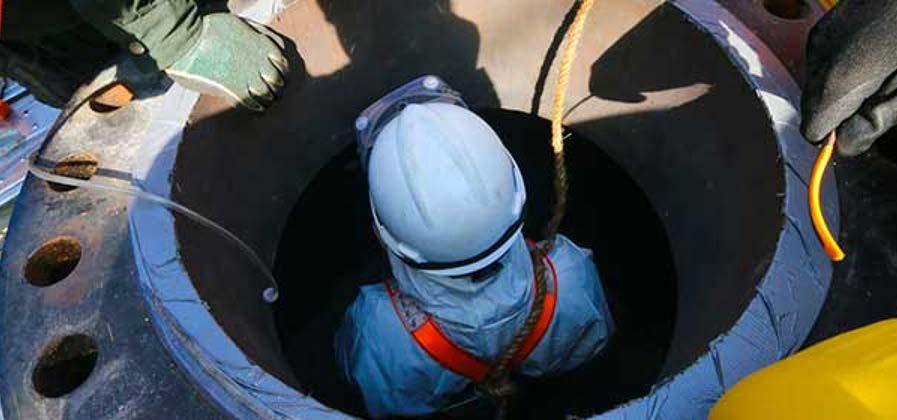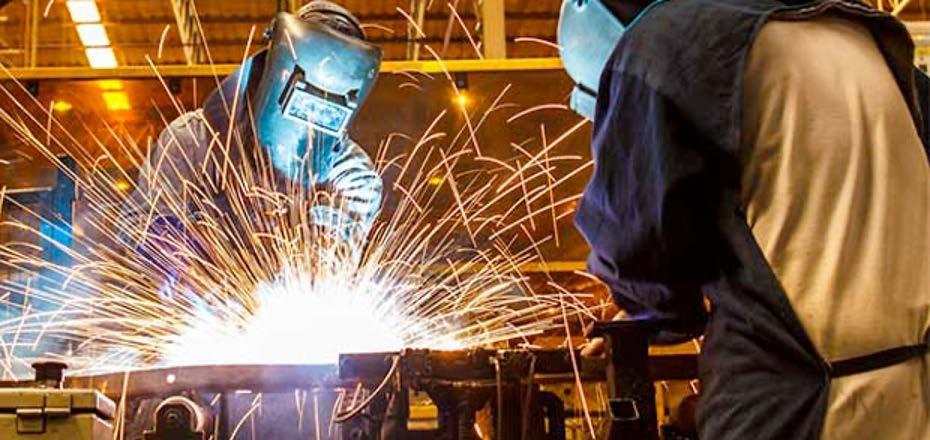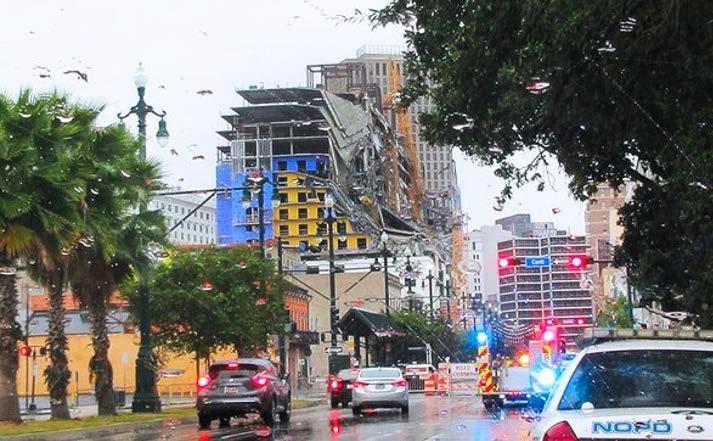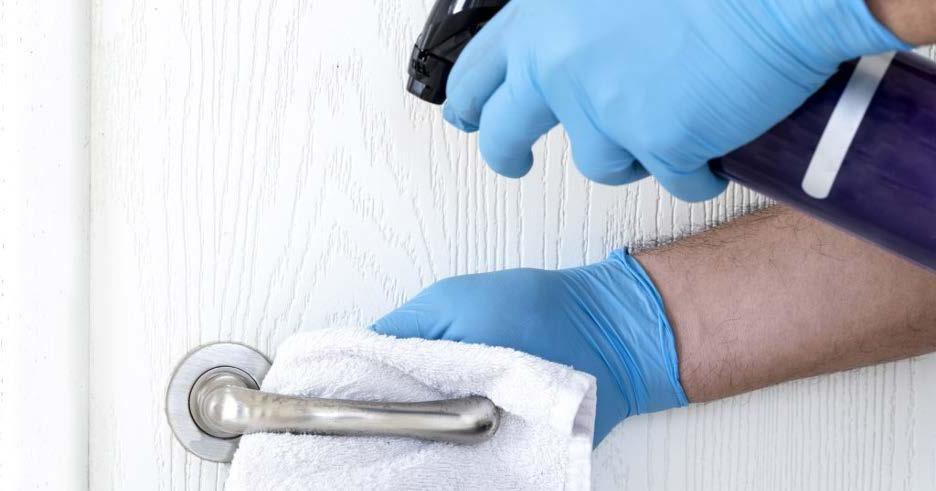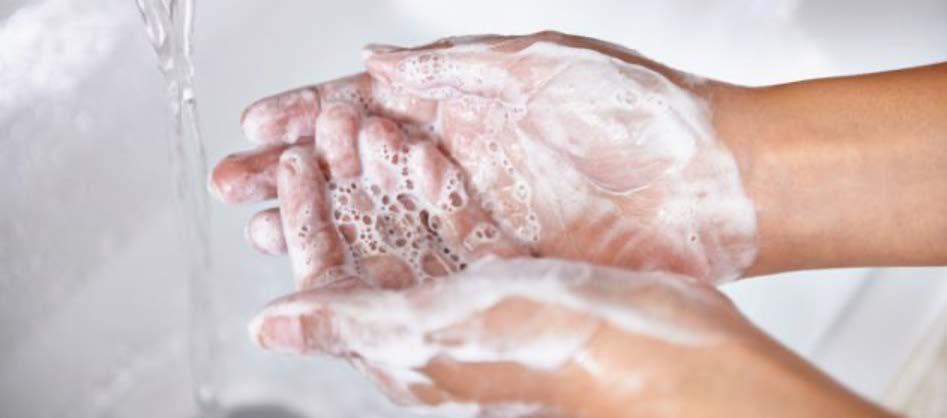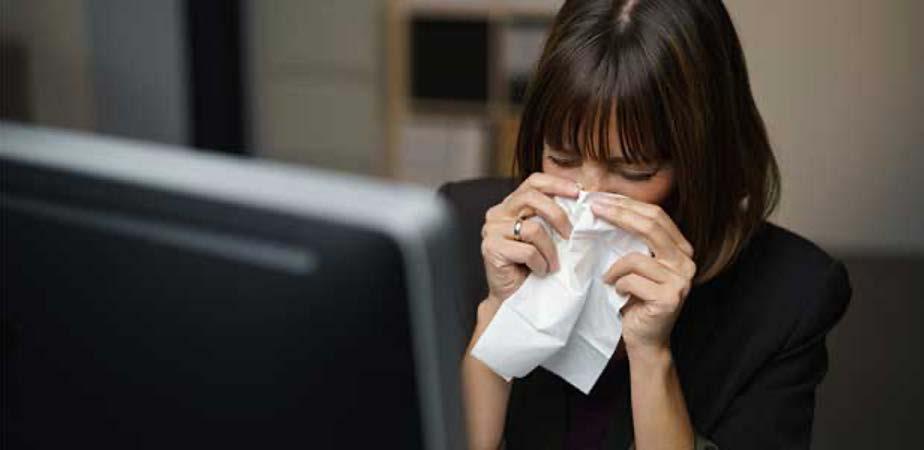Foot Protection. Welders must be protected all the way
Since welders spend the majority of their time standing,
down to the toes. Because hazards like fire, heat, sparks,
comfort plays a huge part in the PPE that covers their feet.
slippery surfaces and falling objects exist for the welders,
Welders should look for footwear that features ergonomic
they must be sure to wear protective footwear.
design, improved cushioning technologies, wider toe boxes
Welders should be donning footwear featuring flame-
and lightweight foot beds.
retardant leather, abrasion- and heat-resistant stitching,
Welding is a huge business, and protecting against
protective metatarsal shields and heavy-duty rubber
every possible hazard is a delicate balancing act. Safety
outsoles that are heat-resistant to the highest temperature.
directors must access the work environment for hazards,
Recent designs feature footwear that slips on, eliminating
engage welders in a conversation on safety and efficiency
the potential for the risk of burn-through laces. For work
and select proper PPE that mitigate the top risks while
environments that might include floors that are wet or
allowing welders to be comfortable—all while remaining in
greasy, foot protection styles should include anti-slip soles to
compliance with industry standards.
help workers avoid falls.
OSHA to Focus Inspections on ‘Imminent Danger’ Sites American Society of Safety Professionals | 04.15.2020 Federal workplace safety and health inspectors will focus
protect workers. An inadequate response could prompt
on sites such as hospitals and other health-care facilities
an inspection.
where there is a high risk of coronavirus infection and specific complaints have been filed, OSHA said in its latest guidance.
The new guidance reflects OSHA’s need to prioritize its resources. Federal OSHA inspectors were spread thin even before the coronavirus crisis, with about 960 inspectors and
“Fatalities and imminent danger exposures related to
supervisors assigned to cover all types of inspections across
COVID-19 will be prioritized for inspections, with particular
the country. Since March 1, OSHA has handled 1,819 virus-
attention given to healthcare organizations and first
related complaints, 52 employer-reported cases, and 19
responders,” the OSHAmemo said.
referrals from other sources, an OSHA spokeswoman told
The instructions, released Monday, also provides a guide
Bloomberg Law.
for employers and workers on how OSHA will conduct
OSHA doesn’t have a specific rule for employers to follow to
inspections and the specific violations inspectors could
control hazards posed by the coronavirus or other airborne
consider during those reviews. The new guidance comes
diseases. OSHA’s guidance highlighted several standards
a few days after the agency altered requirements to
inspectors can use to review compliance, including
limit the types of employers that must record work-related
whether workers wear eye and face protection, sanitation
coronavirus infections.
protocols, general requirements for personal protective
OSHA’s latest guidance said the riskiest jobs are those
equipment, recordkeeping, respiratory protection for
where there is “high potential” for exposure to the novel
workers, and access to employee medical records.
coronavirus. Workplaces considered to have workers at
Inspectors also could use the general duty clause, a
high risk of exposure include hospitals treating infected
provision of the Occupational Safety and Health Act
patients, nursing homes, emergency medical centers,
mandating that employers provide workplaces that are
home care or hospice care providers, funeral homes,
free of known hazards that can be feasibly mitigated.
biomedical laboratories, and medical transport.
OSHA said that when an on-site visit is warranted, inspectors
Businesses with lesser risk of workers being exposed to ill
should do as much of the inspection remotely as possible,
co-workers or customers will be assigned a lower priority
such as conducting by phone the inspection’s opening
for inspection, according to Monday’s guidance. In
conference with the employers. In-person interviews at
those cases, there would likely not be an inspection.
inspection sites should be done in an “uncontaminated
Instead, OSHA would contact the employer and request
administrative area.”
an explanation of measures the employer is taking to
10

